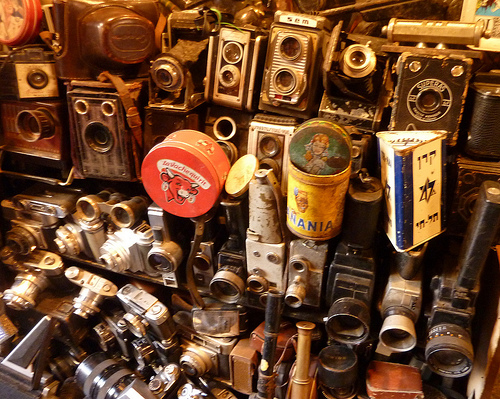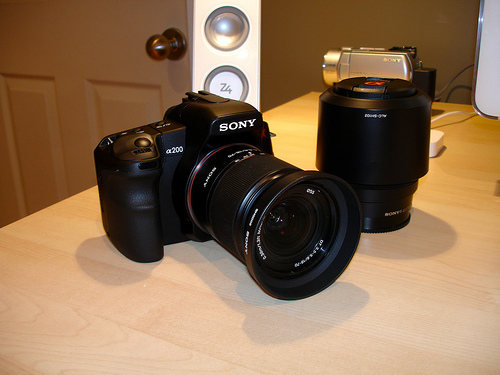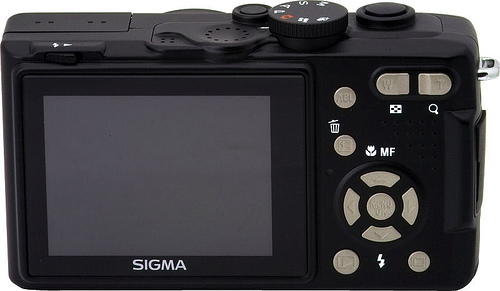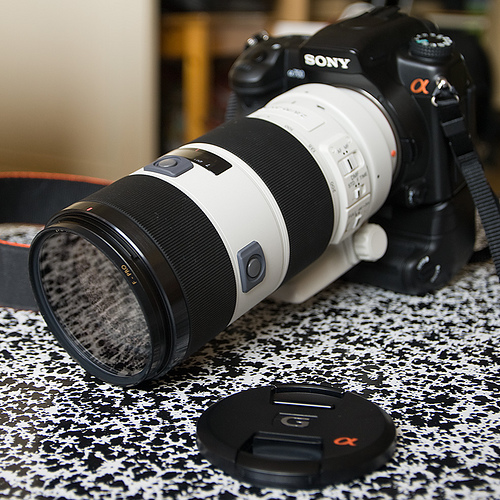Digital Cameras Under £100
To many of us, the digital camera must seem quite a new phenomenon that became almost instantly ubiquitous the moment they appeared. In actual fact, digital cameras have been available since the early 1990's, albeit to Professional Photographers. Those early models were well out of the price range most of us would set aside for taking some snaps, and actually took their time to become popular because franky, film quality was way better.
As with a lot of digital technology, things moved fast and the 'Megapixel' camera was born. As with film, all sorts of shapes and sizes started to appear, from tiny snappy cameras through to professional grade SLRS (called D-SLRS) and the best bit is, prices fell fast, whilst picture quality soon equaled and then surpassed that of standard film.
When people ask my advice about technology, one of the main stumbling blocks has always been the jargon that goes along with any gadget you care to think of. Up until recently, I would say that wasn't quite so true of cameras.
Here are the things you generally need to consider when buying a digital camera:
- Screen size - Digital cameras have screens so you can frame your shot and review after. The bigger the better I think!
- Memory - As every photo is effectively 'free', you want to be able to take as many as you like so you can keep the good stuff and delete the rest. Although memory is usually given in megabytes, it's normally made clear how many shots the camera can take and you can always buy more memory cards.
- Memory card type - If your laptop has a card reader for example, it would be very convenient if the camera took shots direct to one of those, otherwise this is only a consideration for when you're buying more.
- Megapixels - I'll talk about this more, but it's basically the resolution that the camera is able to photograph up to
- Camera type - Do you want something compact to take to parties that is completely automatic, a manual camera with interchangeable lenses for every kind of photo you can think of, or something in between?
So, if you're in the market for a camera and you're wondering what terminology the salesman will attempt to bamboozle you with, it's good to note that there really isn't too much to get to grips with.
Of course if you look much into photography there can be all sorts of concepts to understand and a whole new language to learn, but since we're here to look at cameras under £100, we're going to assume you're looking for a camera for taking shots at partys and throwing in the suitcase to take on holiday.
The first thing you'll be presented with when you start to look at row after row of cameras on the High Street, or indeed the hundreds of results a big online retailer like Amazon will return, is the camera's 'MegaPixel' count. This is a measure of the resolution that the camera can take photos at and a megapixel is 1,000,000 pixels. I had a 1 megapixel camera. It was awful. My next was a 3 megapixel camera and it was much much better! Small wonder then, the marketeers have lept on this one measure as a means to sell cameras and up to a about 5 megapixels, it probably did matter. Now 8, 10 or more is commonplace and to be honest, you'll never notice the difference between a 9 megapixel or a 10 megapixel - at least until you start trying to print and you'll have to print something pretty massive even then! These days, expect to buy a camera under £100 with 6 or more megapixels and dont' worry about it after that.
With megapixels out the way, is it even possible to buy something decent for under £100? Well, actually yes it is, but expect a compromise or two (unless you get lucky and find something on special offer end of line - I'm focusing here on models always destined to be under £100):
Screen Size
On digital cameras, the screen has replaced the traditional viewfinder. Framing shots has become much easier and now anyone can take an acceptable photo. Take enough and a good one should show up! The second job of the screen is to allow you to play back and review the shots you've taken. Finally, it'll display all the menus and settings screens as you use the camera's software.
For all the above, the bigger the screen the better and many snappy cameras have opted for 3" as the optimum size. Some manage to fit more in, by removing the physical buttons and opting for a touchscreen, but you'll generally see a lot of 3" and this is where a budget camera might first show it's a little cheaper than some. Do not be surprised to see a camera in this price bracket with a 2.5" screen. This might not sound like a big drop, but in use it becomes a pretty small screen and can make framing a shot of a moving object, perhaps the kids or a passing vehicle relatively tricky.
Zoom Lens
A zoom lens is a fairly straightforward concept to get to grips with, and fortunately in this area of the market, they keep things pretty simple. The zoom lens simply brings distant objects closer and a budget camera will usually have around 3x to 5x magnification. Spend a few hundred and it's now possible to buy compact cameras like the Panasonic Lumix DMC-Tz10 with 12x magnification!
3x - 5x is ample for most shots though, but there is a catch to be aware of here, because there are two types of zoom advertised and it's important to note the difference between them. Optical zoom, is a genuine lens based zoom which will bring closer the object you're trying to shoot. Digital zoom, the compromise, simply digitally enlarges the area you wish to photograph, crops off the edges and leaves you with a comparably low resolution shot. If you're ever going to try this type of zoom, I would use the cropping tool on your computer, rather than on the camera so that you can properly judge on the computer's big screen that you're happy with the result! Put it this way, 25X digital zoom will make the object you're shooting look like it was made of lego!
Batteries
Something that film cameras really had going for them, was that as electronic devices go, they really did have phenomenal battery life! I remember my last film camera might only have been used at Christmas and the odd birthday, but over the years I think I only changed the battery twice!
Not so with a digital camera. You see your film camera cheated. It made you wind the film on yourself! The viewfinder was just some see through plastic and much of the energy of making a photo was used at the developers. Your digital camera has a motor driven lens, an LCD screen, a processor running some pretty clever software, oh and probably some annoying sound effects to play back everytime you press the shutter button!
Beyond £100, a lot of cameras come with 'Lithium' batteries supplied, which are rechargeable and usually good for 300 to 500 shots. The charger is normally supplied and these will work in most parts of the world, so you're buying a pretty complete package (so long as you remember to bring the charger and use it!).
Under £100, if the camera you're looking at has managed to squeeze in the nice big 3" screen and has a proper zoom lense, then this may be where the compromise is to be found and no battery is supplied. Instead, it takes trusty old AA batteries, probably between 2 and 4 of them.
Personally, I think this last compromise is the one I would be most happy to make. After all, it's perfectly cheap and easy to pick up a couple of AA batteries and a charger for under £10. If you're buying the camera as a gift, I would expect the recipient can pick up that part of the deal! The other reason I wouldn't be too worried, is if you have a camera with a supplied lithium battery, it will not likely be a standard shape. If you forget to charge it, you're stuck. Forgot with your AA battery camera? Well, you're probably only minutes from a shop that sells them!
So which to buy?
Well, as I said at the beginning, cameras come in all shapes and sizes and people have all sorts of scenarios in which they imagine they will use them. Those compromises above will be deal-breakers for some and no problem at all for others. I would say, stick to the big brands, then I think you won't go too far wrong. They are:
- Nikon
- Canon
- Panasonic
- Fuji
Other Features to look out for
Here some features you should list as 'nice to have' under £100:
- Image stabilization - Will smooth out a shaky shot to keep things sharp and in focus
- Video Recording - VGA (also referred to a 640*480 resolution) will look good for youtube, right up to HD, which would look good on your television
- Facial Recognition - The camera will spot faces and focus on them for great portrait shots
In Conclusion
Cameras need to be held and played with before a choice is made, however here are a couple of good site links for reviews from camera enthusiasts that should get you narrowed down:
Nikon Coolpix L22 - 3" LCD, decent zoom, takes AA batteries
Fuji Finepix Z70 - 2.7" LCD, 5x zoom and a rechargable battery
Canon A495 - 2.5" LCD, 3.3x zoom, takes AA batteries
Jp
Featured picture used under 'Creative Commons' license. Thanks to bg.
Sony DSLR Shot used under 'Creative Commons' license. Thanks to mattbrett.
Rear of camera shot used under 'Creative Commons' license. Thanks to infomatique.
Zoom Lens shot used under 'Creative Commons' license. Thanks to Kiyoshi_be.
Loose Batteries shot used under 'Creative Commons' license. Thanks to jonseb.





